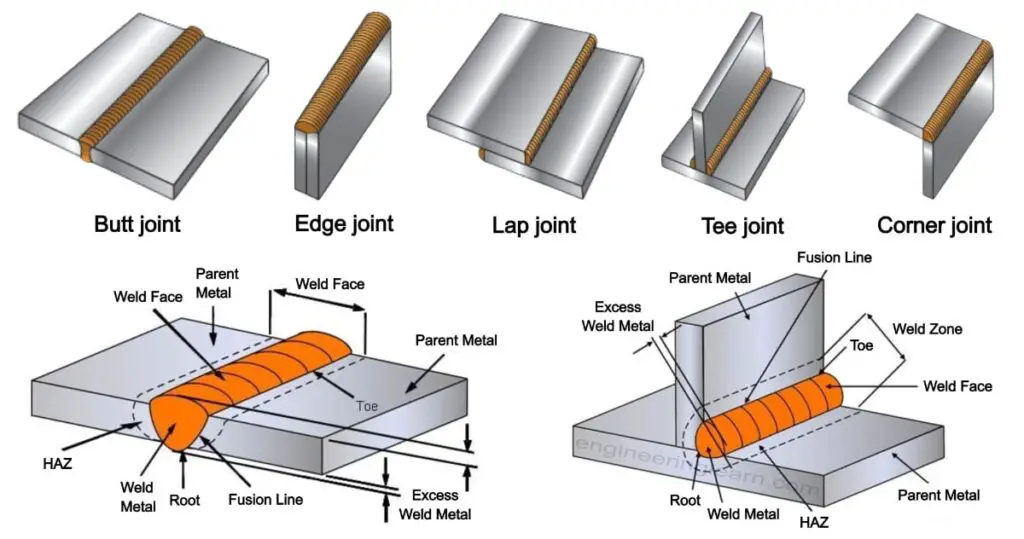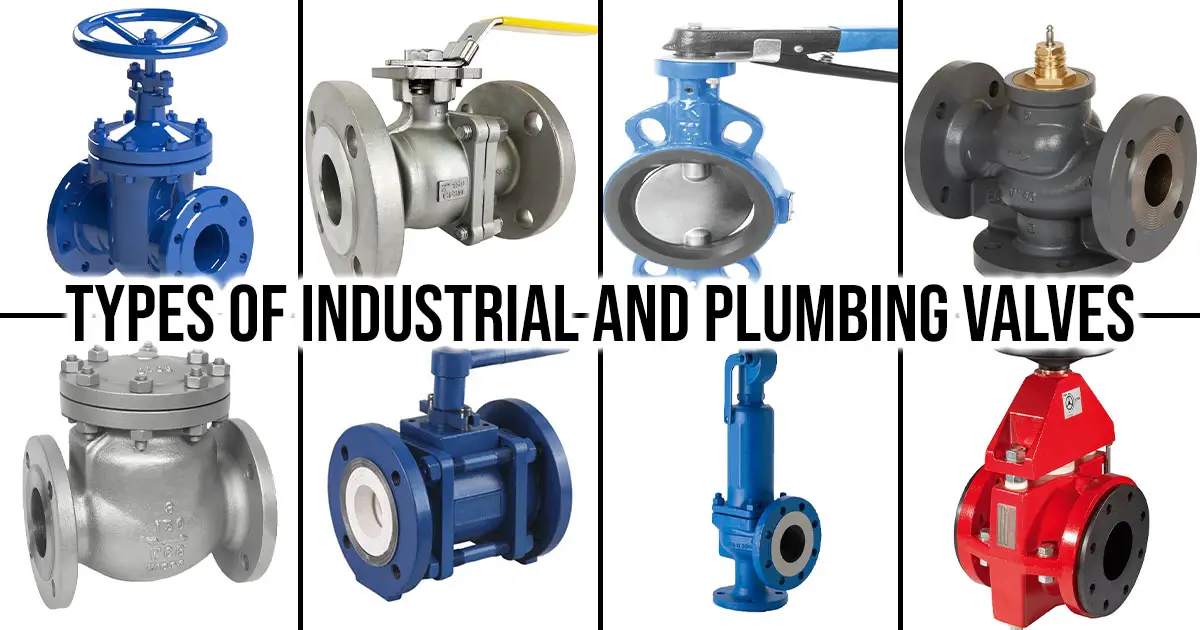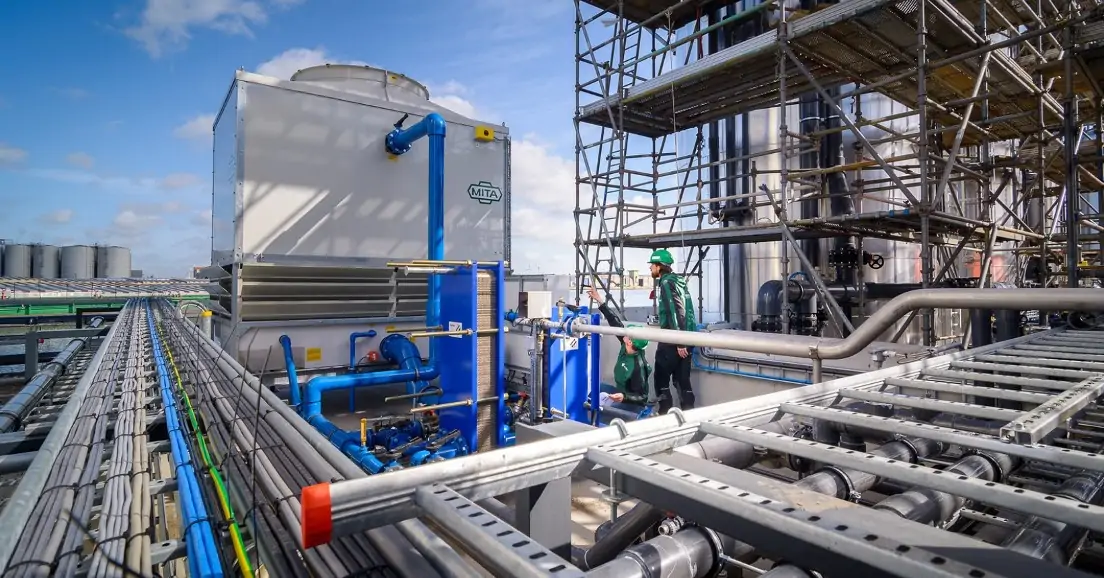What is a Grinding Machine?
A grinding machine is a piece of industrial machinery used to carry out the grinding process. The abrasion technique removes extra material from a work piece during the grinding process. Grinding is usually used as a final step in the machining process. Abrasion occurs in the grinding process due to relative motion between the abrasive material and the work piece. Electrical motors are used in industrial applications for this relative motion.
The Function of a Grinding Machine:
Finishing work pieces that require high surface quality (e.g., low surface roughness) and high shape and dimension accuracy are often completed using grinding. Grinding, with its 0.000025 mm precision in dimensions, is typically used as a finishing operation that removes only a small amount of metal (between 0.25 and 0.50 mm).
While grinding can quickly remove large volumes of metal in some roughing applications, this is not the case in most cases. Thus, grinding is a wide-ranging profession. Special grinding wheels are used to grind gear teeth, threads, spline shafts, holes, spheres, etc.
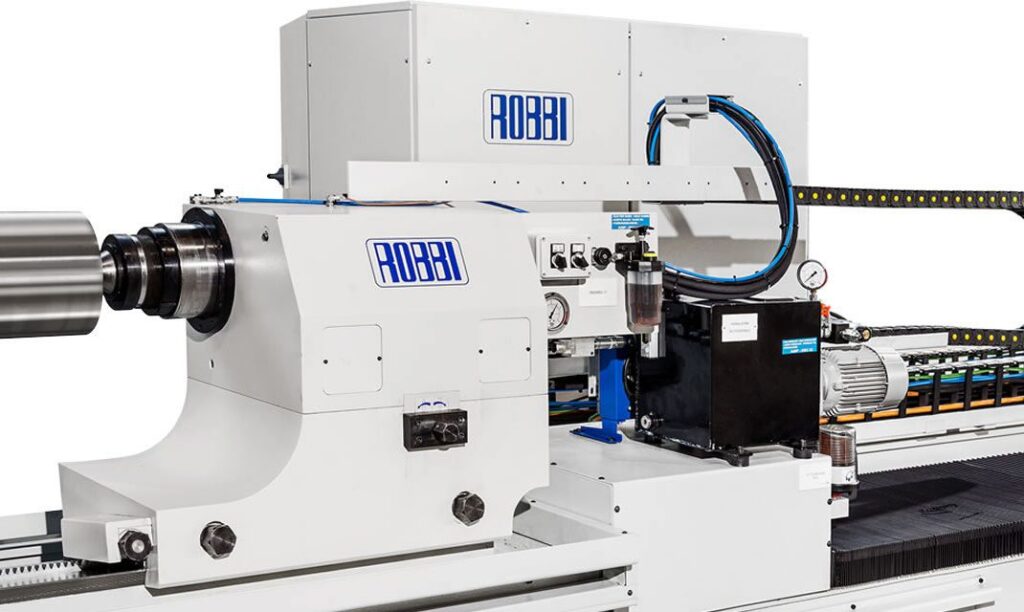
Courtesy: ecomachinetools.com
Grinding Machine Parts and Their Functions:
i) Base: The base represents the grinding machine’s bottom end. Iron is the most common material used, and the grinding machine rests on top.
ii) Table: The table’s base is relaxed. It is where the workpiece is properly positioned for grinding. A hand traversing wheel can move horizontally to the left and right.
iii) Column: The abrasive wheel, wheel head, and wheel guard are all mounted on a vertical column.
iv) Abrasive Wheel: To smooth out the workpiece, this is the main wheel that rotates and removes material from the surface. The abrasive coating on this wheel effectively removes materials from workpiece surfaces.
v) Abrasive Wheel Head: The vertical feed hand wheel is a traversing wheel that allows you to raise or lower a chamber. The grinding wheel is brought into contact with the workpiece by advancing the wheel head.
vi) Wheel Guard: Worker safety is ensured by the protective cover on the abrasive or grinding wheel.
vii) Traversing Wheel: There are three types of traversing wheel.
- Hand Traversing Wheel: Transverse wheels are used to move the table, and this one is left horizontal to accommodate the grinding wheel’s work piece.
- Cross Slide Hand Wheel: Moving the work table forward and backward with this traversing wheel ensures that the work piece and grinding wheel make contact.
- Vertical Field Hand Wheel: The wheel head can be moved vertically up and down using this traversing wheel. These three wheels are used to adjust their positions to ensure that the grinding wheel and the work pieces are in contact.
Types of Grinding Machine:
1. Surface Grinding Machine:
A surface grinding machine removes material from a work piece’s surface using a grinding wheel as a cutting tool. For precise finishing, abrasives are placed on the grinding wheel’s surface and corners. It is known as abrasive machining. Rather than a multi-point cutting tool, an abrasive grinding wheel with multiple abrasives acts as a single-point cutting tool.
A sharp spinning wheel is used to smooth the metallic or non-metallic material’s surface and give it a more refined appearance by removing the oxide coating and contaminants on top of the workpiece. The operational objectives will also be met as a result of this action. In addition to the abrasive wheel and the job-carrying chuck, the surface grinder also includes a reciprocating, rotating table. Chucks are used to hold raw materials in place while they are being worked on.
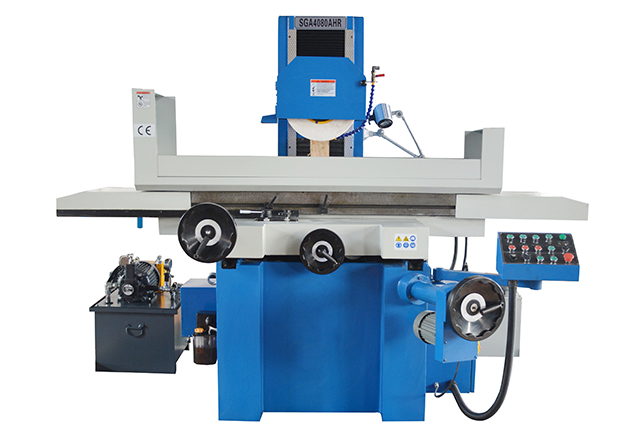
Courtesy: cncwmt.com
A magnetic chuck holds the ferromagnetic chunks, while an emptiness or mechanical process holds the non-ferromagnetic and non-metallic fragments. If only a magnetic chuck is available, a machine vice can be used to hold a non-ferromagnetic workpiece. Surface grinding considerations include the material of the grinding disc and the material of the work being done at the time.
Cast iron, mild steel, aluminum, stainless steel, brass, and other plastics are common materials found in the workplace. As soon as the raw material is milled at high temperatures, it deteriorates and becomes more vulnerable to decay. An endless array of shapes and sizes are possible for the grinding disc because the standard cylindrical shape doesn’t constrain it. Moving various geometries according to the objects will be easier with this feature.
Surface Grinding Usages:
- Surfaces that are flat or cylindrical can be finished with this product.
- It can be used to grind a wide variety of tools and cutters.
- The workpieces can be milled with abrasives.
- It is employed in a wide range of industries and institutions.
2. Cylindrical Grinding Machine:
This machine is designed for grinding the workpieces’ outer and inner surfaces with precision-type machinery. Two centers are used to rotate the workpiece during cylindrical grinding. The work is rotated much slower than the grinding wheel, which is mounted on a spindle. Working stations are mounted on tables that can move in various directions so that the entire length of work can be moved in front of the wheel in either direction as needed. The depth of the cut is 0.015 mm, which is extremely thin.
This machining process is repeated until the work piece’s desired diameter is achieved by passing through the wheel’s traverse and having the wheel advance forward by another 0.015 millimeters (mm). One ends up with an extremely fine-surface-finishing long cylindrical cylinder that is perfectly circular.

Fig 3: Cylindrical Grinding Machine
Courtesy: libertymachinery.com
Cylindrical Grinding Machine Usages:
Use a cylindrical grinding machine to grind an object’s or task’s outer and inner surfaces with high precision.
3. Tool and Cutter Grinding Machine:
CNC machines use tool and cutter grinders because they have multiple grinding wheel axes, so there is no need to change the grinding wheel for each operation. A small grinding machine, as you can see here. This grinding machine is used to grind drills, reamers, taps, and milling cutters. Typically, soft-grade grinding wheels have a straight, flared cup or dish design.
The wheel head can be rotated in any direction, and the tailstock can be inserted into its “T” slot on the working table and used for various tasks. The whole thing can be moved around to suit your needs. Both ends of the job are held in place by the headstock and tailstock.
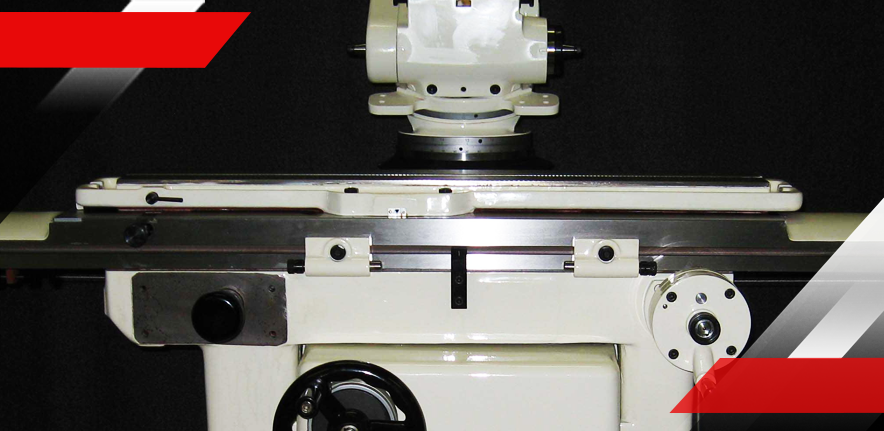
Courtesy: leblondusa.com
Tool and Cutter Grinding Machine Usages:
Milling cutters, drills, end mills, and step tools are some of the most commonly used cutting tools that can be sharpened and made using these grinders. Industrial settings like metal cutting and woodworking make extensive use of this tool.
4. Centre less Grinding Machine:
The chuck is used in this grinder to hold the workpiece in place. A grinding wheel and a regulating wheel are used to move the job. The grinder consists of four parts: work rest, regulating wheel, grinding wheel, and a guide. Because of the grinding wheel’s pressure, Jobs keeps his hand on the work rest blade. The regulating wheel ensures that the job is spinning at the same speed. So, the regulating wheel moves in the same direction as the grinding wheel. The task moves forward at a steady pace.
The speed and inclination of the control wheel determine how fast work moves. It is flexible and can be altered to meet specific needs. Modern factories employ this style of grinder for large-scale production. This grinder is used to polish and finish jobs involving glass, porcelain, wood, rubber, plastic, iron, steel, and alloy. It is possible to put the job in their hands.
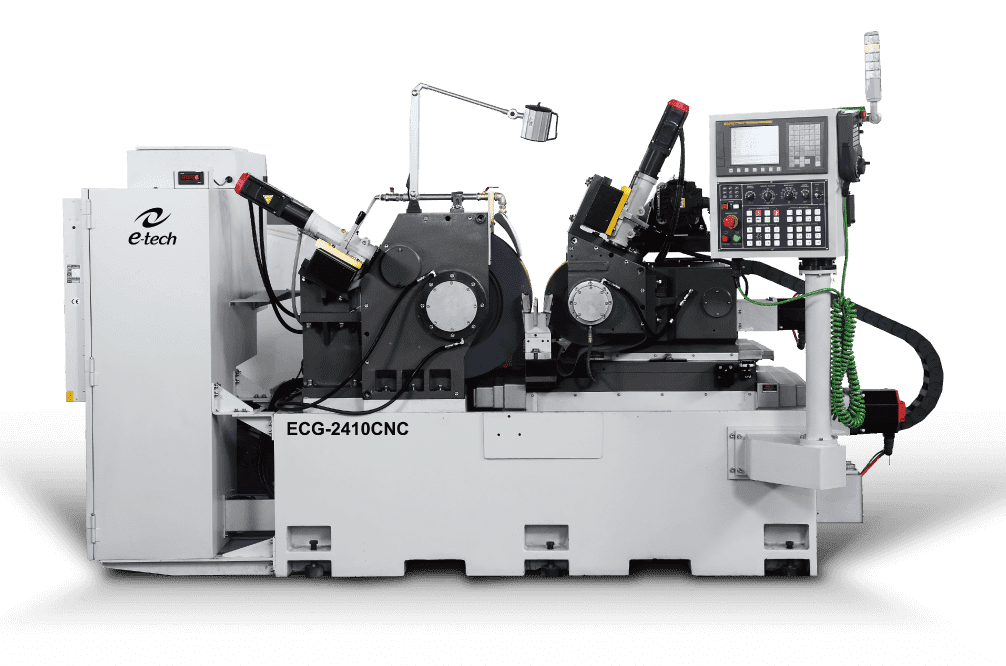
Courtesy: etechtw.com
Centerless Grinding Machine Usages:
Many major industries can benefit from the process’s ease of use and effectiveness, such as automotive, aerospace, agriculture, defense, medical, power generation, etc.
5. Bench Grinding Machine:
These grinding machines are permanently mounted on a table or workbench. As a result, it has either a gear or a pulley. A handle is also attached to rotate the large gears or pulleys; one or two grinding wheels can be found inside it. This grinder can be used to sharpen cutting tool edges. It’s possible to power these things, too.
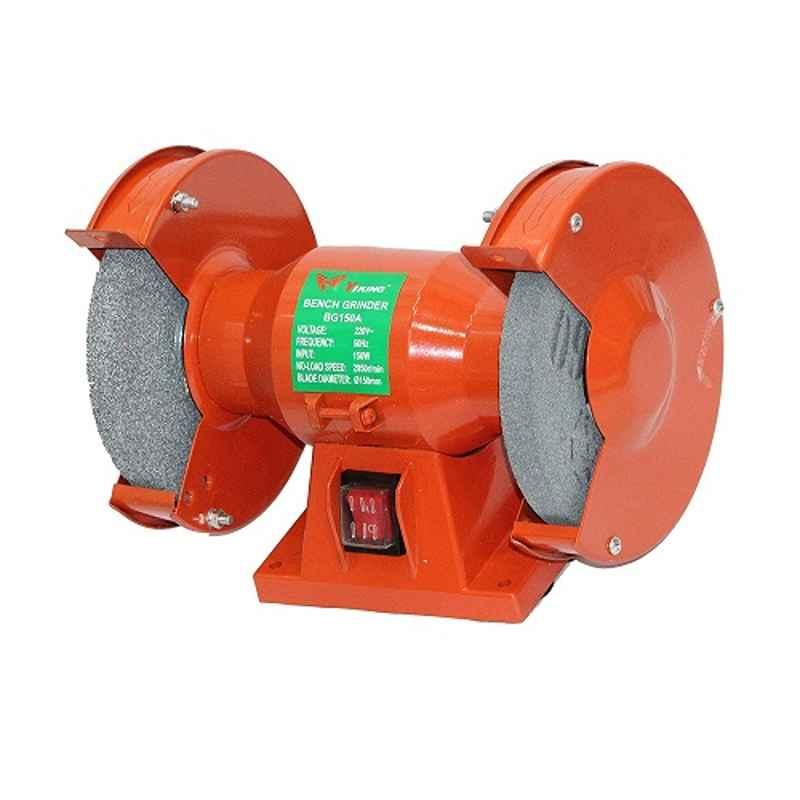
Courtesy: moglix.com
Bench Grinding Machine Usages:
For grinding small parts in laboratories, bench grinders are used to grind cutting tools.
6. Portable Grinding Machine:
This little grinder is powered by electricity. It is portable and simple to carry. By holding it in your hand, you can grind. It is employed to clean complicated welding tasks. A grinding wheel is attached to one end of the motor shaft; depending on convenience, a handle or switch is fixed to the other. Because there is a chance of receiving an electric shock, it should be used carefully.
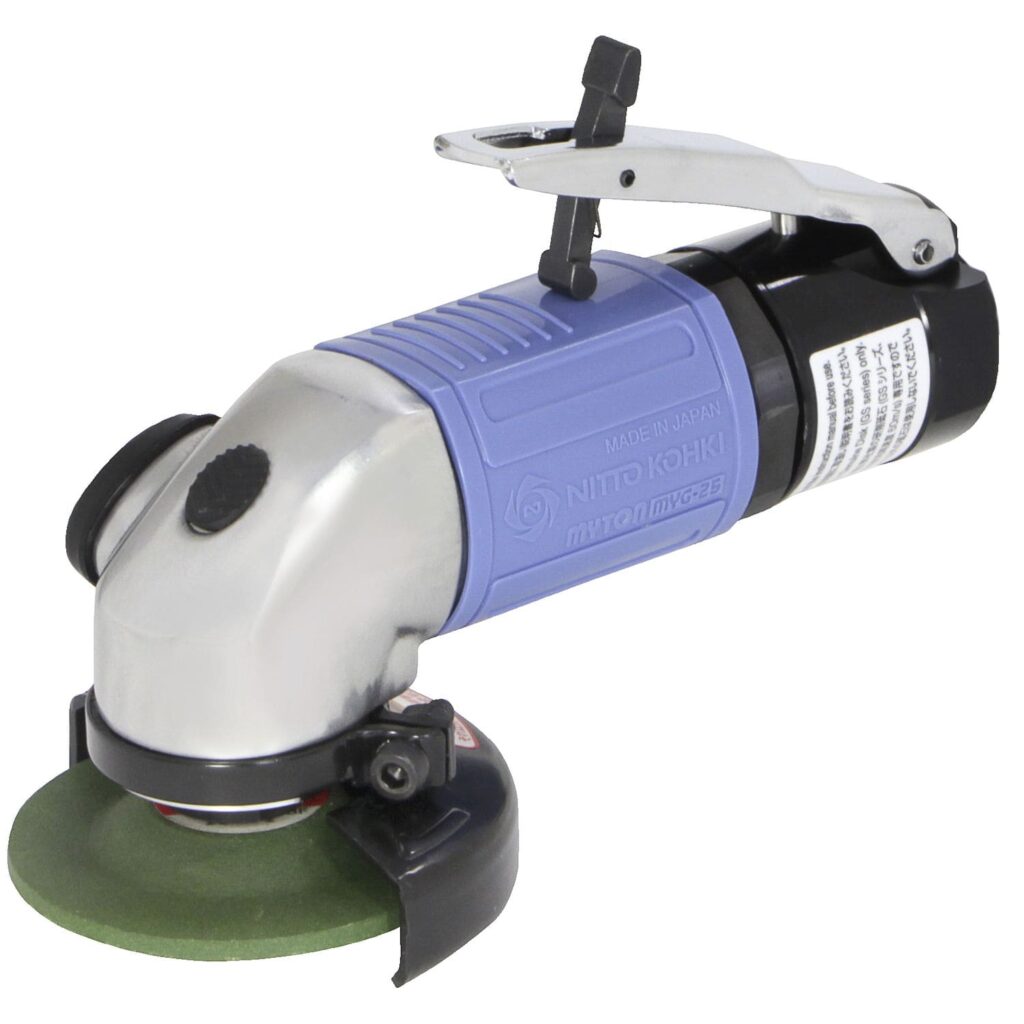
Courtesy: directindustry.com
Portable Grinding Machine Usages:
Portable grinding machine used in the cutting of tiles and pipes.
7. Universal Grinding Machine:
A universal grinder is a metalworking tool used to grind, file, and polish various metal cutting projects. In contrast to most other types of grinders, universal grinders can work with various materials and tools that require grinding processes. Grinder manufacturers typically design their machines to only work with a limited range of materials. For example, the grit, size, and shape of a metal grinder differ from that of a tool grinder.
The machine uses high-speed rotation between the fixed teeth disc and the motive teeth disc, which can produce impact, friction, and mutual collision between materials during the grinding cavity processing. The finished powder exits the grinding cavity through the outlet. The common powder will be collected in cloth bags after the pulverization of the materials is complete.
Sieve meshes are used to measure granularity. The machine’s features are simple, firm, stable, fast, uniform, and good at grinding materials. There is nothing but stainless steel in the entire machine. Teeth grooves are made in the grinding cavity with the help of highly precise mechanical equipment. The surface of teeth is smooth and easy to clean.
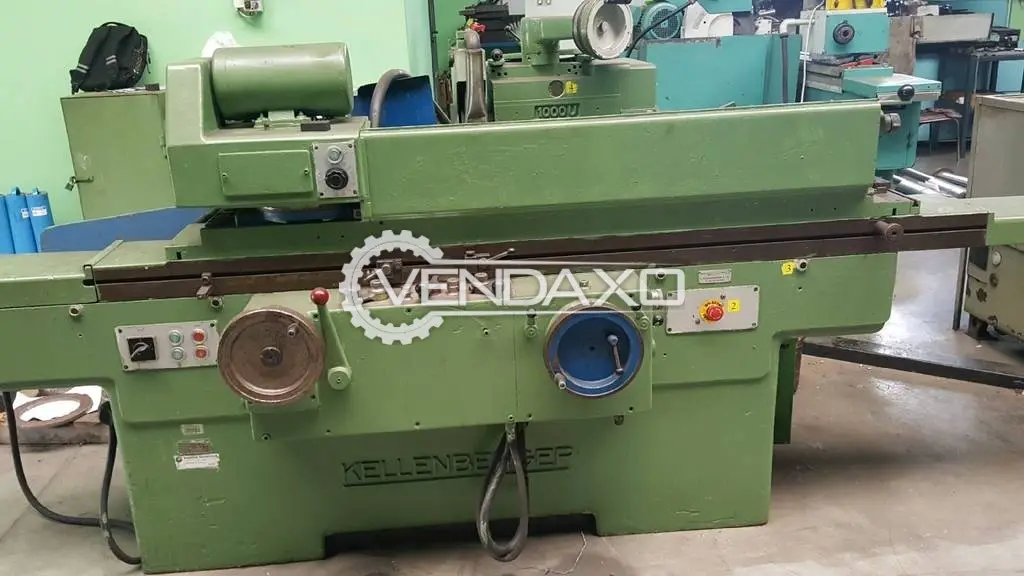
Courtesy: vendaxo.com
Universal Grinding Machine Usages:
This universal grinder machine is commonly used to grind pharmaceuticals, chemicals, food, and other materials. Inflammable and explosive materials may not be ground.
8. Internal Grinding Machine:
The internal grinder is built around a sturdy main framework that is low-vibration and designed to hold everything else in place. A spindle shaft holds the workpiece in place with either magnetic or conventional clamps or a clamping sleeve. Propelled by the grinding spindle and swung on a skid to adjust material removal, the spindle’s motions move the grinding body. Collision control is standard on most CNC internal grinding machinery.
The internal grinder can work in a dry environment or one that has been properly cooled. Improved surface accuracy can be achieved by cooling the milling waste, making removing it easier. With its millimeter-level accuracy, this machine is perfect for producing fittings.
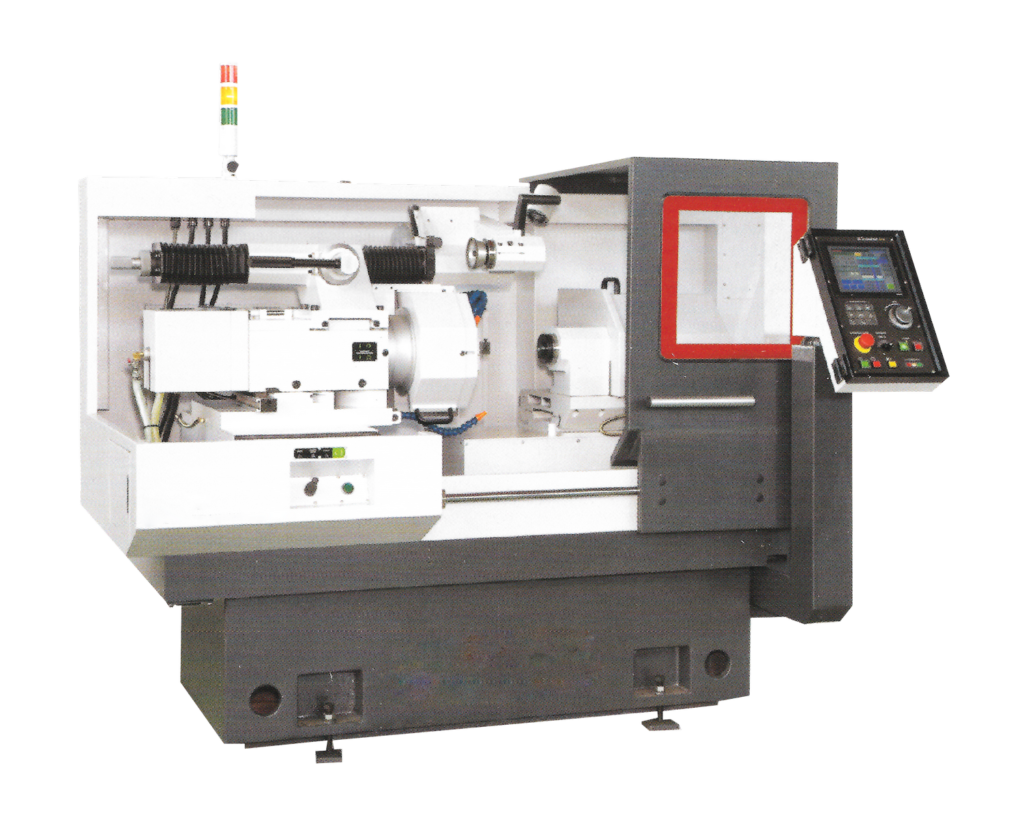
Courtesy: hongchinginternational.com
Internal Grinding Machine Usages:
Bearing yokes, guide bushings for mold and die-making extractors, and other cylindrical elements that have been case hardened can be worked with this tool. Cycle times are shortened, and the correspondence between surfaces improves precision. With an internal grinder, you can go beyond the limits of a lathe’s precision capabilities.
9. Form Grinding Machine:
A form of grinding is also known as non-generating grinding, and it’s a grinding that produces an exact copy of the finished product. A specialized form is applied to the wheel’s face during grinding and then transferred to the workpiece. A disc wheel is used to grind both sides of the spline gap. The process is guided by the form of an involute attached to the wheel.
A form grinder can grind both external and internal spur and helical gears up to 36″ in diameter. Using an automated grinding cycle reduces the reliance on human ability while simultaneously improving production accuracy by guaranteeing exact repetition of the selected cycle.
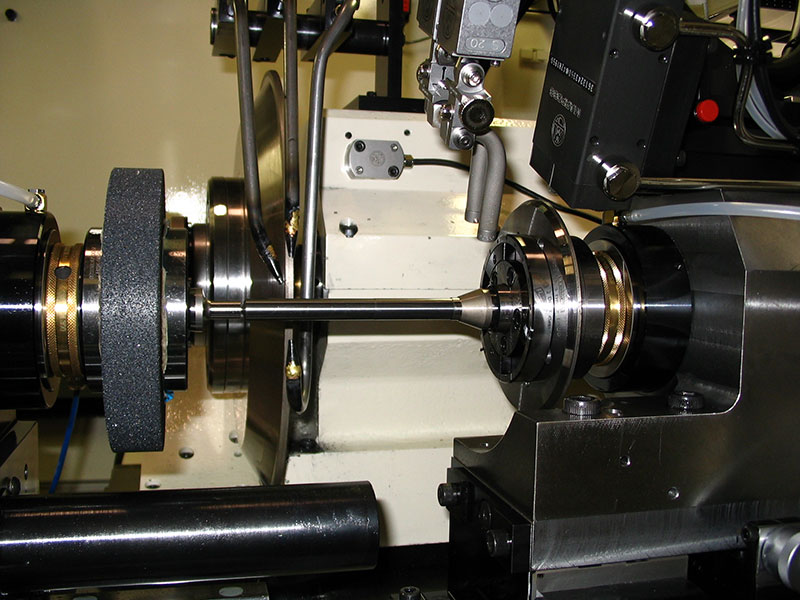
Courtesy: floridagrinding.com
Form Grinding Machine Usages:
Form grinding is used to grind gear teeth, threads, spline shafts, holes, spheres, etc.
Why are Grinding Machines so Important and Revolutionary?
For the most part, the objective of a grinder is to keep the tool in good working order and minimize the need to buy a new one. Knives and scissors are just a few examples of cutting tools you’ll find on a workbench. These machines must be high quality, reliable, and easy to use. Even untrained operators should be able to achieve excellent results with this machine.
There are numerous industries where grinding is used to produce high-quality finished products and surfaces. Machine tools that combine computer-controlled feed drives with slide-way motions, allowing complex shapes to be manufactured without manual intervention, are now used in modern industry to perform the grinding process.
Conclusion:
Grinding machines use abrasion to remove material from a workpiece, which generates a lot of heat. Grinders use a coolant to keep the workpiece from overheating and going out of tolerance. Maintenance and repairs on grinding machines typically necessitate the use of specialized personnel. Grinders must also be checked regularly to ensure they are in good working order.


